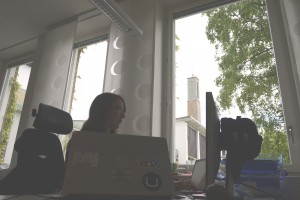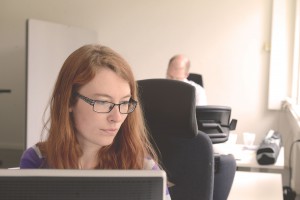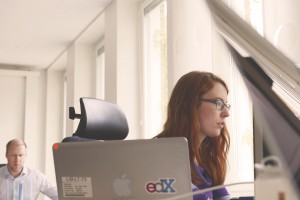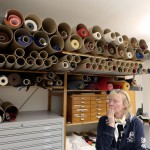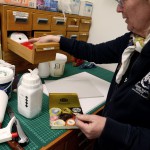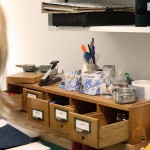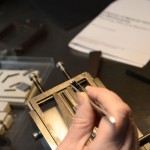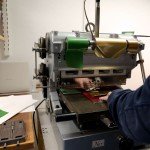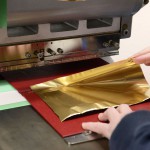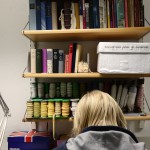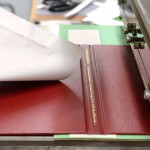Bookbinder Tina Hansson has worked at Chalmers for 20 years. Before that she was self-employed in Fjällbacka. – When it comes to producing books, the modern work is terrible. Tina demonstrates by opening a book and the binding breaks with a click sound. If one sews with a linen thread, which I still do sometimes, it will last for a hundred years, she says.
The knowledge at Chalmers Library is evolving at every turn. Within the walls of the library there is a wide spread of competences. We meet the bookbinder and the film editor at our online education team – two professions from two different traditions.
What do the staff working at the library have in common? Some of their personal qualifications, according to Daniel Forsman, Library director.
– It’s about how they act in a changing world and their will to learn new things, he says.
At Chalmers, the traditional Library meets the modern, although the core values are still the same.
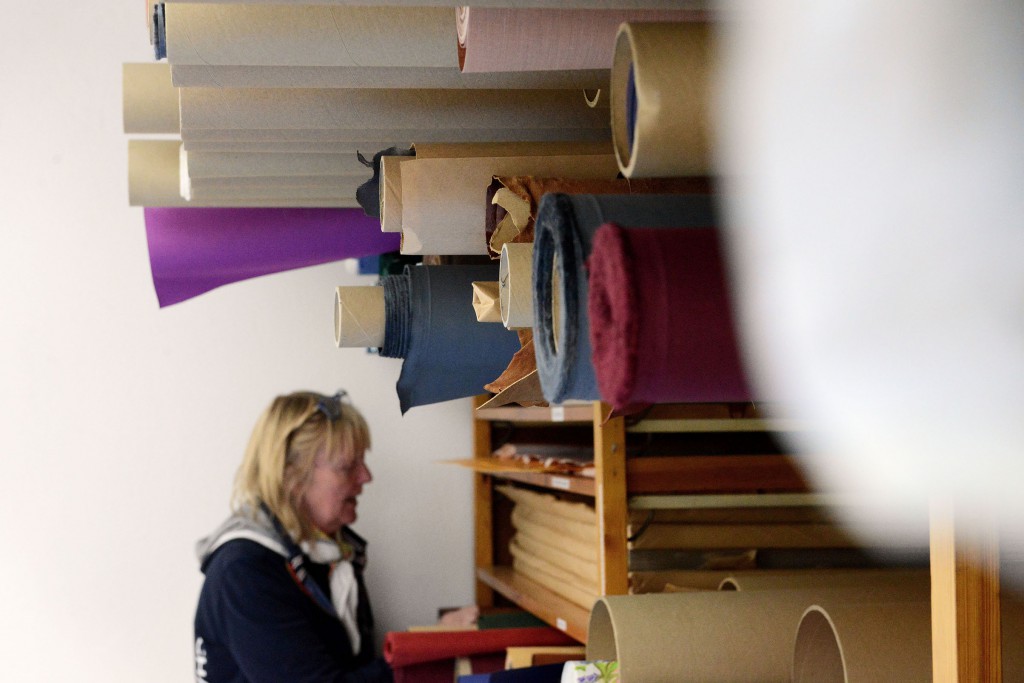
Chalmers is one of two libraries in Gothenburg that still has an employee with the professional title bookbinder. It’s early afternoon and with a pair of tweezers she picks out small and large letter stamps from a tray. Her hand is steady. The letters are soon to be printed in gold on a velvet cover. Tina Hansson studied silver- and woodcrafts at Stenebyskolan during the late 80’s. Most of her time she spent in the sketching aula. When her teacher recommended her to study to become a bookbinder, Tina responded with a sigh. – Never ever, I thought. But then I applied, got in and after 14 days I knew it was the right thing for me, she says. Her two rooms are across the hall from each other. They are both full of small boxes with colourful patterns. – I think my grandmother kept her pins in this one. I’ve brought some private things here. This has become my second home, she says. The steps to the second floor can be compared with time-travelling. Here, Märta Sjöblom has just sent an e-mail to 6 000 new students on an online course called Sustainability in Everyday Life. She works in the MOOCs project, producing Chalmers first Massive Open Online Courses. Digital and Blended Learning is changing the way Chalmers conducts education. During development of the Sustainability Course three teachers collaborated for the first time, coming up with a new format. It was challenging since it is aimed towards students in all ages from all cultures, says Märta Sjöblom. Märta Sjöblom works with film editing in the project MOOCs, Massive Open Online Courses. The courses offer short video lectures, flipped classrooms, discussions and analysis. – Everything is available online. It’s the new way of learning, Märta Sjöblom thinks. – No one can keep their concentration for longer than seven minutes, and there are still lectures that last for two hours. The old ways of learning are out-of-date. We all know they are wrong, from a pedagogic point of view, but it takes a lot to change the ways, she says. Chalmers is one of a few universities that do online education in the form of MOOCs. – Chalmers is at the forefront when it comes to technical and library-development. I’m not suprised we decided to do this. There’s a reason we are nominated to become Library of the year. Even though the forms are always changing, the values stay the same and the core of what a librarian do is persistant. To edit film is untraditional, but other moments are not. – To cater information for our users is what we always have done. It’s just taking different forms. Some of the ”domesdayprophets” say that the online education is the downfall of the universities. But MOOCs is the future, even though it’s not the only future, Märta Sjöblom says.
